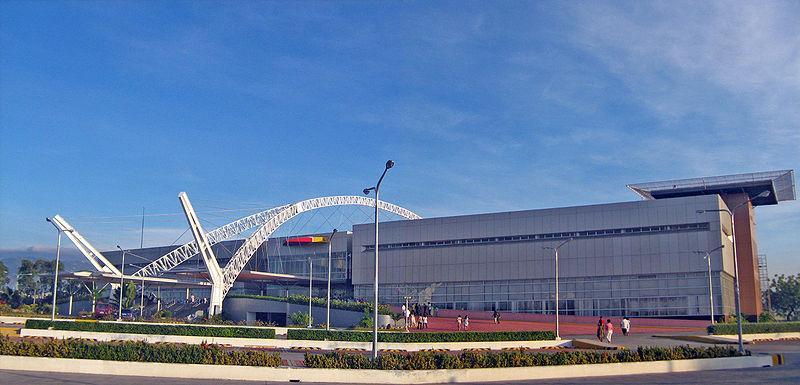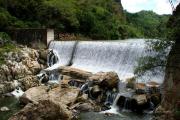
The Cebu International Convention Center (CICC) is a 3-storey structure built by the Cebu Provincial Government for the 12th ASEAN Summit and 2nd East Asia Summit at a cost of about US$ 10 million dollars. It has a gross floor area of 28,000 square meters and is situated on 3.8 hectares of land at the Mandaue City Reclamation Area in Metro Cebu.
Development
The site where the convention center now stands was originally intended for a sports complex dubbed as the "Cebu MegaDome." A contest was held for its design and the winning entry was the "spinning disc" by Architect Alexus Medalla. The project however was stalled after some members of the provincial board opposed it.
In late 2005, Philippines President Gloria Macapagal-Arroyo decided that the province would host the 12th ASEAN Summit and 2nd East Asia Summit in December 2006, which was later on moved to January 12–15, 2007 due to Typhoon Utor. The Philippines was supposed to host the twin summits on December 2007 when Myanmar, the original host for 2006, backed out. Since the province lacked a standalone convention centre with complete facilities for a large and prestigious international gathering like the ASEAN Summit, Cebu Governor Gwendolyn García revived the "Mega Dome" project but with the design revised as a convention center instead of a sports arena. The external structure would still be that of a "spinning disc."
A few weeks after though, a new design came up and was eventually considered since it was cheaper and easier to build, granting that it was smaller in size too considering the time constraint that the Cebu Provincial Government was running to. Construction for the substructure began on April 2006 and work on the superstructure itself which was largely made up of structural steel, glass and aluminum cladding began three months after. The centre was finished four months later sometime in late November and was officially inaugurated on January 6, 2007.
Facilities
The convention centre features an international media center, a large plenary hall, an exhibition hall and several meeting rooms.
How to Get There
By Plane: From Manila, there are daily flights going to Cebu City.
By Boat: Cebu City's domestic port is the country's busiest. Cebu City is home to almost 80 percent of the country's passenger vessels. The country's largest shipping lines, namely WG&A, Sulpicio Lines, Trans-Asia, George & Peter Lines and Lorenzo Shipping Lines, are headquartered in Cebu. Large passenger ferries with a capacity of 2,000 to 4,000 passengers ply the more distant routes such as Manila, Davao, Butuan City, Zamboanga, and Cagayan de Oro.
From the airport, you can ride a multicab, jeepney, or taxi. Simply ask around for which route to take. They are available 24 hours and cover most of the nooks and crannies of the city. Just be sure you know what part of the city the jeepney will take you to.










